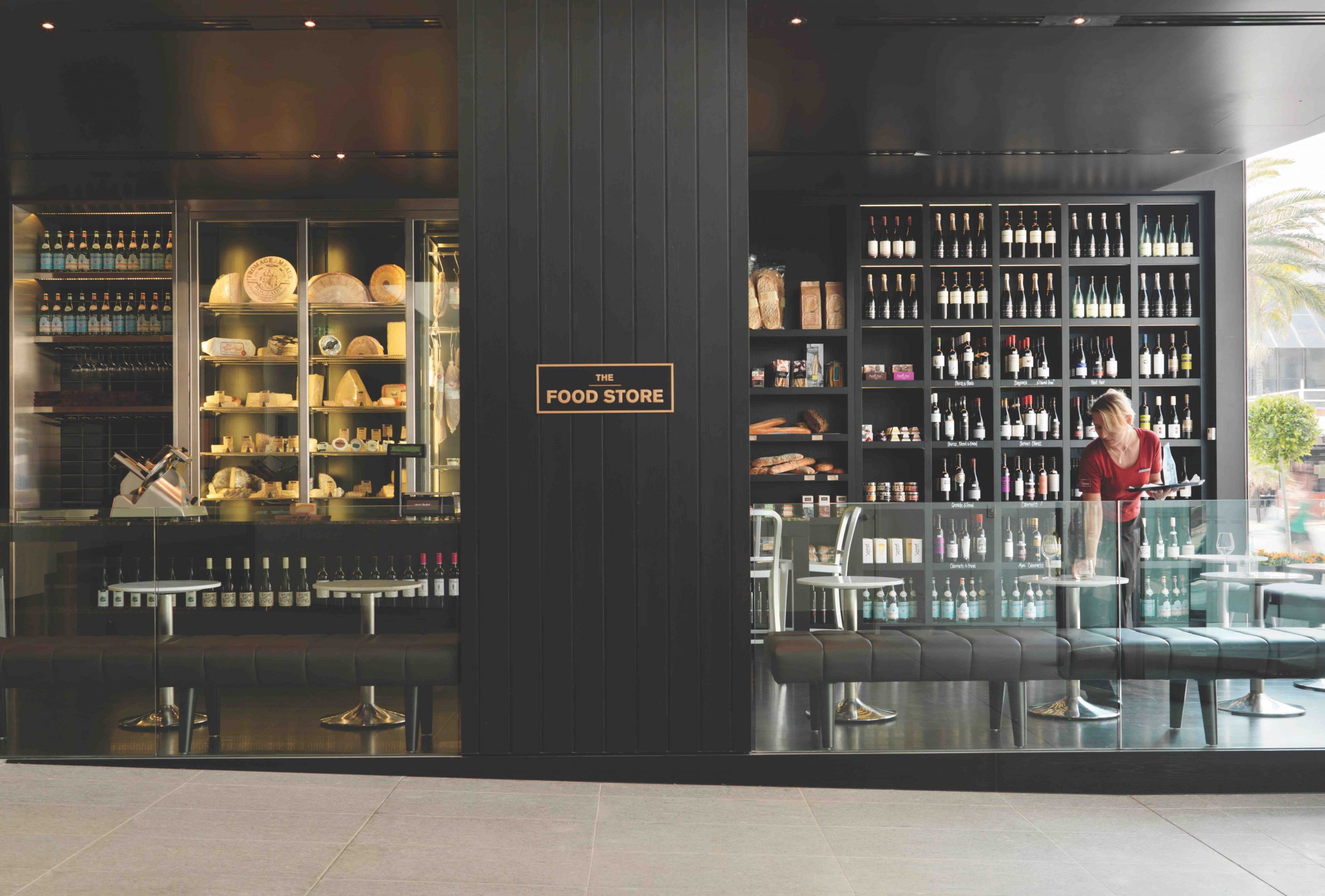Australia-based Landini Associates was founded in 1993, with work that melds strategy, architecture, interior, graphic, product, furniture and digital design. Its clients span all sectors of retail and hospitality — from global brands like ALDI, Hilton Hotels, and McDonald’s to lifestyle brands including Burt’s Bees and small boutique retailers like jeweler Sarah & Sebastian. A+A recently interviewed design directors Wayne Cheng and Paul Gates about their work for Hilton Hotels:
Tell us about your work for Hilton Hotels:
Paul Gates: Hilton Hotels is one of the world’s most recognized hospitality brands. Over the past decade-plus, our team at Landini Associates has developed a long-term relationship with Hilton’s leadership. We’ve worked closely with the brand in several countries to create new food and beverage concepts at a number of new construction and renovated properties, ranging from urban hubs to beachfront destinations.
Your assignments for the brand?
Wayne Cheng: When we work with Hilton Hotels on a dining project, our brief is often to design a restaurant that doesn’t feel like a hotel offering — the goal is to create a destination that people in the community will seek out for the quality of its design and ambiance, as well as its food offerings. These are restaurants that can stand on their own, and that are flexible enough to become both a destination for locals and a sanctuary for the hotel’s guests.
Your design intent?
Wayne Cheng: The design intent comes from the brief, and it always reflects the context of a specific Hilton property. At Hilton Brisbane, for instance, we were commissioned to redesign the hotel’s restaurant and bar. Our goal was to provide the perfect inner-city oasis and design the restaurant, called Vintaged, in a way that brings back the sophistication and glamour in hotel dining. Our solution focused on designing a classic space with a timeless simplicity — which we achieved through the layout, lighting, finishes and furnishings, and artwork.
With Hilton Papua New Guinea, we were commissioned to design the hotel lobby, bar and restaurant as well as the café kiosk in the convention center — expressing a contemporary vision of Papua New Guinea, embracing its cultural diversity and bringing a modern take on local colors, patterns and materials.
How does an existing space influence your design?
Paul Gates: Respecting the heritage of these hotel properties is important to our work with Hilton, and we like finding ways to take cues from existing spaces, reinterpreting or repurposing where we can. At Hilton Brisbane, our design was influenced by a desire to pay homage to the modernist Harry Seidler’s iconic 1985 vision for the hotel. We played off of existing spaces by specifying dark leather custom-designed banquettes and walnut and ebony chairs and tables for the main dining area, and modernist red seating in the central lounge area — complementing the otherwise white interior of the original hotel.
At Hilton Adelaide, the space featured an antiquated mirrored ceiling and lighting feature that couldn’t be serviced. Rather than discard it completely, we created a fresher version which reference’s the space’s history but which uses new energy-efficient technology.
Where do you find your inspiration?
Paul Gates: With Hilton Hotels, our design inspiration can come from a variety of sources. In some instances it derives from the location. A successful beachfront property will need a different design approach than a hotel in a downtown urban setting — and in both instances, the result should draw on its surroundings. We also find inspiration from the heritage of specific Hilton properties. Hilton Brisbane is a perfect example. It’s the only hotel building ever designed by Harry Seidler, and his modernist vision really informed how we responded to Hilton’s brief for the Vintaged restaurant space.
Your material palette?
Wayne Cheng: As much as possible, we aim for a material palette that draws on the project’s setting and environment. In our Hilton Papua New Guinea project, for instance, material selection is directly inspired by the country’s natural resources and cultural heritage. We used local timber in the ceiling, stairs and alcoves; volcanic stones in the columns; and brass, steel and copper in the furniture and fixtures. By contrast, Hilton Brisbane uses a decidedly modernist vocabulary and palette.
How does the context influence the design?
Paul Gates: Context is hugely important for us in our work with Hilton, and it always influences our design approach. The goal is to address all the necessary commercial and functional requirements of a hospitality property in a way that also brings local energy and color. We like to do this in unexpected ways. A good example is the Hilton Surfers Paradise project, on Australia’s Gold Coast. We wanted to avoid the thematic design clichés so often employed in this region, so our restaurant spaces offer provocative photography of the darker side of the “Coast,” and use materials and lighting not normally associated with a Hilton. Nearly all of the furniture is custom designed, and we also created a deli and wine shop — a first for Hilton — and placed it next to the main entrance, immediately challenges one’s expectations of what to expect.
For more, go here.
[slideshow id=2281]


